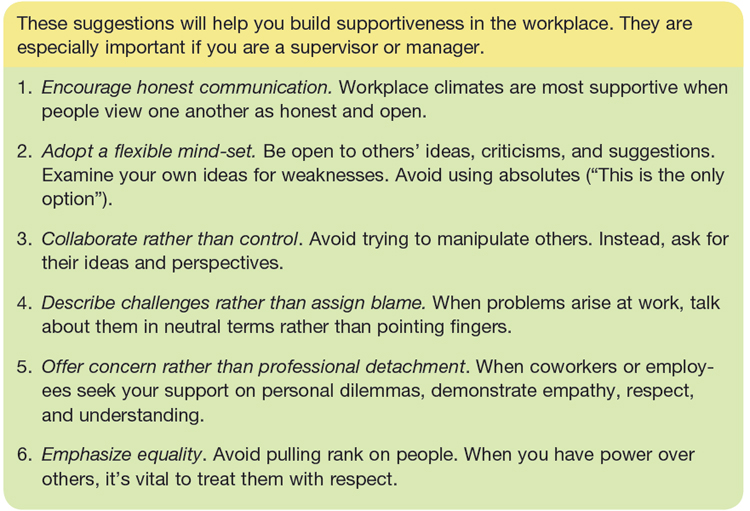12.1.3 Organizational Climates
Printed Page 393
Organizational Climates
Think about an organization with which you’re currently involved, as a paid worker, volunteer, or member. How would you describe the overall emotional tone of the place—that is, the way it feels to be there? Is it supportive, warm, and welcoming? Detached, cool, and unfriendly? Somewhere in between? This overarching emotional quality of a workplace is known as its organizational climate (Kreps, 1990). Organizational climate is created primarily through interpersonal communication, specifically, the amount of trust, openness, listening, and supportiveness present in the interactions between organizational members (Mohammed & Hussein, 2008).
Two types of organizational climates exist (Kreps, 1990). In a defensive climate the environment is unfriendly, rigid, and unsupportive of workers’ professional and personal needs. For example, supervisors may use communication as a way to strategically control others and to strictly enforce company hierarchy. Employees may resist change, be close-minded toward new ideas or outside input, and negatively perceive any dissent. In contrast, workers in a supportive climate describe the workplace as warm, open, and supportive. Workers communicate honestly, collaborate to solve problems, share credit, practice empathy, and encourage people to treat one another with respect, despite any imbalance in power.
Defensive Climate
Watch this clip to answer the questions below.

Question
Want to see more? Check out the Related Content section for additional clips on supportive climate.
Organizational climates are rarely purely defensive or supportive. Instead, most fall somewhere in between. In addition, organizations may have different climates within different units, depending on workers’ personalities, job demands, and supervisor communication styles (Elci & Alpken, 2009).
Question
As just one person in your organization, you obviously don’t have sole control over the climate. Nevertheless, organizational climate is built from the ground up: it is the sum total of individuals’ interpersonal behavior in the workplace. Consequently, everything you say and do in your workplace contributes to the climate. See Table 12.1 for tips on how to encourage a supportive organizational climate.
Table 12.1 Creating a Supportive Climate

